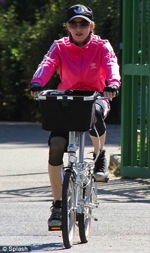Most of us ride our bikes primarily for personal reasons such as enjoyment or saving money. There are many other benefits to cycling however and numerous reasons why cycling and walking, even for just our shorter trips, are better for our communities as well as for us personally.
Crashes. Traffic crashes are costly. Not only the painful loss of family and friends but also financially. We in the U.S. are three to four times as likely to die in a vehicle crash as someone in The Netherlands, Denmark, or Sweden. We have the most dangerous road system of all developed nations. Injury statistics are even worse. We all share in the costs of these crashes, directly and through higher taxes and higher auto and health insurance premiums – repairing the vehicles and other stuff that’s damaged and repairing the people who are damaged but survive.
Healthcare. Healthcare is increasingly expensive for all of us and a large part of this increased cost is self-induced – we don’t take care of ourselves. We spend over $9,000 per person per year on healthcare (as of June 2015) – over twice what other developed countries with more active lifestyles spend. In three years we are expected to spend three times as much. Cycling and walking for some or all of our transportation not only helps us individually but a more active walking and cycling culture will reduce the increasing shared costs that we all bare.
An obese person costs about $9,882 per year more than a non-obese person. An active person costs about $1300 per year more than a sedentary person. Add these together and we’re talking real money. While most companies have been seeing increases in healthcare costs, QBP in Bloomington MN has seen a 4% decrease which according to an in-depth study by Health Partners is due to their very high number of bicycle commuters.
Obesity. The costs of obesity alone are significant. Even discounting for lower life expectancy, obesity is likely the single biggest element in rising healthcare costs and each of us pays for these costs with higher taxes, higher insurance premiums, and higher costs of goods. It’s not only the costs of treating our massively increased rates of diabetes, cardiac, joint, and other problems caused by obesity, but also basic stuff like the need for special beds, wheelchairs, and operating tables able to handle the extra weight. Restaurants have had to reduce the number of seats so that they can fit in larger booths for obese folk. Every ounce costs when flying and airlines say that they lose considerable money on obese passengers. It all adds up to our national weight problem being a significant expense – for every one of us.
Land Use. In a century of building and expanding roadways, we have never been able to build our way out of automobile congestion. We increase road and parking capacity and within a couple of years we’re back where we started. Much of this is induced demand – build it and they will come. And they keep on coming. Cars simply require huge amounts of space – to manufacture, sell, refuel, maintain, and discard. And more than anything, to drive and park.
Eventually we begin to run out of space for roads and parking.
Consider that one mile of 6’ wide bikeway can transport over nine times as many people as one mile of 12’ wide roadway. But wait, there’s more (RIP Billy Mays)! Cycle and pedestrian networks are mostly non-blocking. Cyclists and pedestrians can, in most cases, quickly and safely negotiate around each other when they intersect, cars though, require stop signs, stop lights, and queuing space. Many multi-lane roadways are multi-lane, not because of traffic volume, but to deal with queuing at junctions. The only time pedestrians and cyclists must stop is when interacting with cars. So we have a gob more pavement for queuing space (that is often only needed for about the peak 3 hours of the week).
When you add it all up, each car requires, conservatively, over 17 times as much roadway as each bike. Some have put it as high as 35 times.
Parking is worse. Each car or bicycle we use requires just under four parking spaces to exist for our use (at work, shopping, church, government, entertainment, etc.), not including personal driveways or garages. This results in about 38 square feet of space for each bicycle (and that’s being quite generous, northern Europe packs ’em in about a quarter this much space) or 800 square feet for each car – 20 times as much space for cars as for bicycles!
Water Conservation. This relates closely to land use and, given recent problems with low lake levels, is particularly prescient. It’s also interesting to note that Ramsey county has combined surface water management with transportation management due to the increasing impact paved roads and parking are having on our water supply.
Think about all of the land use above. All of that asphalt and cement. Even when we do a good job of capturing run-off in to holding ponds instead of sending it down the Mississippi, it doesn’t all percolate down to the aquifers. The holding ponds and rain gardens are too small. You can’t take 50,000 square feet of surface and force it through 2,000 square feet. But sadly, much of our asphalt surface doesn’t even get that chance, it drains directly to the Mississippi.
Air Pollution. Though significant from operating cars and buses there is also pollution created in the manufacture of each car and creating the fuel for our cars, and transporting fuel from oil fields to refineries to gas stations. Air quality analyses also indicate high levels of debris from brake pads and tires that are quite toxic and believed to contribute to pollution.
Water Pollution. Would you drink water off of an average street? Oil and fuel leaks from cars are a significant source of pollution. Then there are fuel spills from crashes (cars, tanker ships, gas trucks, and trains), leaky underground storage tanks and pipelines, as well as water pollution created by refineries, car manufacture (cars and all of the parts that go in to them), and junk yards.
Noise, Light, and Comfort Pollution. For most of us, a street of cyclists and pedestrians is considerably more pleasant than one of cars. Bikes and pedestrians are quieter, don’t alarm people as much speeding by, and don’t splash as much through water, snow, and slush. They don’t need as much or as bright of lighting (on the bike or overhead).
Litter. People walking or riding bikes are much less likely to litter than those in cars. This may partly be due to people in cars feeling somewhat removed from their surroundings – they’re in their car, not ‘out there’.
Energy Consumption. Bicycling burns calories, not oil.
Energy Consumption II. Consider the energy used in the manufacture of cars and all of the parts that go in to them and transporting the parts and cars and running the showrooms and service garages and transporting spare parts and making the fuel and transporting fuel to gas stations and even a bit to dispose of the car at the end of it’s life. Then there’s all of the energy required to build and operate all of the manufacturing plants and showrooms and refineries. Each square foot of road or parking surface consumes a bit of energy to grade the land, make the asphalt, and lay the asphalt. Cars are heavy and create more wear and tear on parking lots and roads requiring more energy to tear out the old and put in the new.
Costs of Road Construction and Maintenance. Cars require a lot of space to drive and park and all of these roads and parking spots have to be constructed, maintained, and rebuilt occasionally. With cars it takes a 3900 pound vehicle to transport a 150 pound person, with bikes it takes a 30 pound vehicle to transport that same person. That extra weight means a lot of extra wear and tear on the roads requiring much more frequent repaving and reconstruction.
According to a GAO Study, one 80,000 lb truck driving over a road causes the same damage as between 5,500 and 9,600 car trips over this same road. Each car trip causes about 3,800 times as much damage as a bicycle trip over this road. Replacing just 10% of our car trips with bicycles could potentially double the lifespan of many roads (the wear from cars is greater, but other factors such as weather limit roads lifespan as well).
But it’s worse. All of those roads and parking space are not only expensive to build and maintain but are largely off the tax rolls. Where a piece of land might have once had four businesses on it, today it has a single Wendy’s and a gob of parking. That parking doesn’t generate revenue (not to mention the health problems that all of those Baconators cause).
Reduce Crime. The presence of people walking and riding bicycles is a deterrent to crime. Criminals feel safer around people in cars because they know that drivers are less likely to notice what they’re doing and even if they do notice, they’re less likely to stop or do anything.
Increase Local Business. Someone on a bike is much more likely to stop in and purchase something than someone flying by in a car at 40 mph. People walking along a sidewalk are more likely to hang around and shop if there aren’t cars flying by. Many retail businesses around New York were against the installation of bike lanes and bike parking out of fear that the reduced driving lanes and parking would negatively impact their business, now they’re offering to pay to get bike parking in front of their business after seeing the increase in business when protected bikeways were installed.
—-
Each trip or mile each of us walks or bikes is a bit less pollution. Each is a bit less energy consumed, a bit less healthcare and crash cost we all must bare, and a bit less maintenance costs of roadways. Each mile is a bit less congestion, a bit less crime, and a bit less roadway and parking space that will need to be built. Even just riding our bike to dinner instead of driving one day per week is beneficial.
But,
3 – Is Cycling Safe?

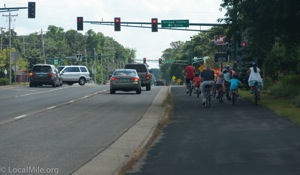 In much of Shoreview, walking or riding a bike for local transportation is not just feasible, but quite enjoyable. Shoreview’s paths, like the one to the left, are becoming more popular each year. One 42-year resident recently told me that she’d not really considered riding a bike for local errands until just earlier this year when it occurred to her that there were bike paths everywhere she usually goes. She bought a bike at Now Sports and said that it has been one of the delights of her life. Now she’s trying to talk her friends in to riding.
In much of Shoreview, walking or riding a bike for local transportation is not just feasible, but quite enjoyable. Shoreview’s paths, like the one to the left, are becoming more popular each year. One 42-year resident recently told me that she’d not really considered riding a bike for local errands until just earlier this year when it occurred to her that there were bike paths everywhere she usually goes. She bought a bike at Now Sports and said that it has been one of the delights of her life. Now she’s trying to talk her friends in to riding.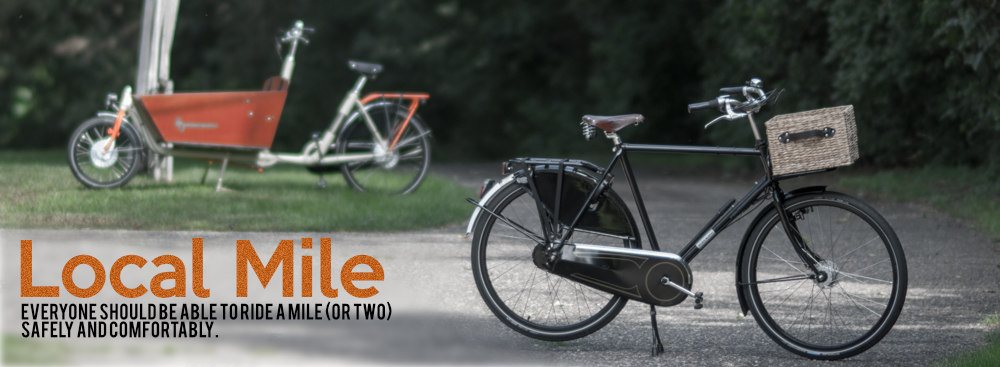
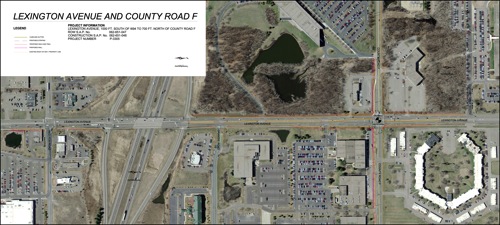

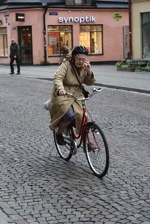 There’s an interesting symbiosis happening between young and old – cycling.
There’s an interesting symbiosis happening between young and old – cycling.